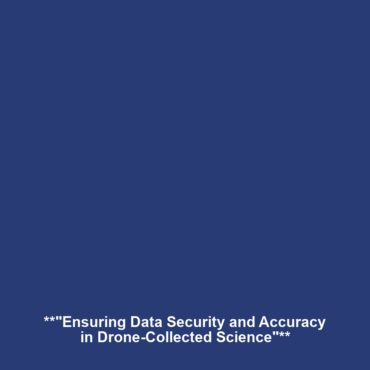Data Security and Accuracy: Ensuring the Integrity of Drone-Collected Data
The integration of drones in science has revolutionized data collection across various fields, from environmental monitoring to urban planning. However, the accuracy and security of the data collected by these unmanned aerial vehicles (UAVs) have become paramount concerns. Ensuring the integrity of drone-collected data is not only essential for reliable scientific research but also vital for maintaining trust in technological advancements. In this article, we explore the significance of data security and accuracy in the realm of drones in science.
Key Concepts
Understanding the principles of data security and accuracy is crucial for harnessing the full potential of drones in scientific applications. Below are foundational concepts related to this topic:
Data Security
Data security pertains to the practices and measures taken to protect data from unauthorized access, corruption, or theft. In the context of drones, this includes safeguarding sensitive information collected during aerial surveys and research activities.
Data Accuracy
Data accuracy refers to the precision and correctness of the information gathered by drones. High accuracy ensures that the conclusions drawn from data analyses are valid and reproducible, which is essential for scientific integrity.
Applications and Real-World Uses
Data security and accuracy have numerous practical applications in the field of drones in science. Some notable examples include:
- Environmental Monitoring: Drones are used to collect data on air quality and vegetation health. Ensuring the integrity of this data is critical for effective environmental management.
- Agriculture: Precision farming relies on accurate drone data to optimize crop yields. Data integrity helps in making informed decisions that can significantly impact agricultural productivity.
- Disaster Management: Drones assist in disaster response by collecting real-time data. Securing and verifying this data can enhance the effectiveness of emergency responses.
Current Challenges
Despite advancements, several challenges hinder the effective application of data security and accuracy in drone-collected data. Key issues include:
- Data Breaches: Unauthorized access to sensitive data remains a significant concern, highlighting the need for robust security measures.
- Technological Limitations: Not all drones are equipped with high-accuracy sensors, which can lead to unreliable data collection.
- Regulatory Issues: Navigating complex regulations regarding data privacy and usage can impede research and data sharing.
Future Research and Innovations
Future advancements are expected to shape the landscape of data security and accuracy in drone-collected data. Potential innovations include:
- Enhanced Encryption Methods: New encryption technologies can provide higher levels of security for sensitive data collected by drones.
- AI and Machine Learning: The application of AI can improve data accuracy by enabling more sophisticated data analysis and filtering methods.
- Next-Generation Sensors: Development of advanced sensors can lead to higher quality and more accurate data acquisition, enhancing overall data integrity.
Conclusion
In conclusion, data security and accuracy are integral to ensuring the integrity of drone-collected data within the sphere of drones in science. Meeting these standards will enhance the reliability of scientific research and foster innovation. To stay updated on the latest breakthroughs in this area, we encourage readers to explore related topics such as future research directions and applications of drones in science.


